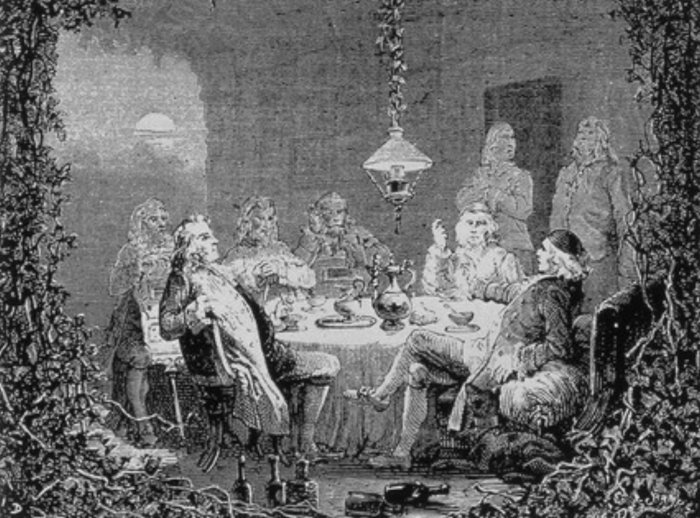Lunar Society: Great Scientists Of The 18th Century Who Changed The World
Cynthia McKanzie - AncientPages.com - The Lunar Society consisted of great scientists whose ideas and inventions changed the world forever. Not everyone could become a member of the Lunar Society. This club served as a gathering place for scientists, inventors, and natural philosophers during the second half of the 18th century.
Members of the Lunar Society met regularly on the Monday nearest the full Moon between 1765 and 1813 in Soho House in Birmingham, England.
These gifted polymaths used to joke and call themselves lunatics, but this could not have been much further from the truth. They met nearest the full Moon simply because the light was better at night and thus ensured the members a safer journey home along the dangerous, unlit streets.
The Lunar Society never had more than 14 core members. Each member was noted for their particular area of expertise, including the most outstanding engineers, scientists, and thinkers of the day.
They were not only interested in science but especially in applying science to manufacturing, mining, transportation, education, medicine, and much else. It would be more appropriate to describe them as a revolutionary committee of that most far-reaching of all the eighteenth-century revolutions, the Industrial Revolution. Supremely confident, they were changing the world forever, and they knew it. They firmly believed that what they were doing would benefit humanity.
Visits and correspondents often swelled the ranks of the dozen regular members of the Lunar Society from more peripheral members, including Thomas Jefferson, Benjamin Franklin, Sir Richard Arkwright, Thomas Bedoes, Anna Seward, John Smeaton, etc.
Statue of Matthew Boulton, James Watt and William Murdoch in Broad Street, Birmingham. Credit: Public Domain
Among the members were great thinkers like:
Joseph Priestley, a minister of religion and amateur scientist who discovered oxygen, the indiarubber eraser and much else, invented carbonated water.
William Murdock, inventor of gas lighting.
William Small, doctor of medicine who had taught mathematics to the young Thomas Jefferson and who had interests in engineering, chemistry and metallurgy.
Jonathan Stokes, botanist.
James Watt, inventor of the condensing and rotary steam engines, an early copying process and much else; maker of musical and scientific instruments, canal surveyor, and more.
Josiah Wedgwood, celebrated potter, canal promoter and Charles Darwin's other grandfather.
John Whitehurst, maker of clocks and scientific instruments, and a pioneering geologist who did much to work out how the earth had been formed.
William Withering, another medical doctor, also a botanist with interests in metallurgy and chemistry. He is most famous for discovering the medicinal properties of the foxglove in treating heart disease, and took the place of William Small following the latter's untimely death in 1775.
The American statesman Benjamin Franklin was a corresponding member of the society, as were others including John Smeaton, the great civil engineer.
Meeting of the Lunar Society at Soho House late 18th century. Science Museum
What is not commonly known is that the Lunar men instigated the anti-slavery movement, with Thomas Bicknell writing an anti-slavery poem, 'The Dying Negro’ (1773), and Wedgwood produced medallions showing a chained slave with the motto "Am I not a man and a brother."
They wanted to bring poverty, science, and social consciousness to the debate and improve our world.
These passionate, optimistic, idealistic individuals marked their place in the world as the new class, the nonconformists and reformers whose domination we feel now.
Although their informal meetings were a mixture of social gatherings, experiments, and discussions, they led to significant progress and scientific achievements that significantly improved our society.
Updated on August 3, 2022
Written by Cynthia McKanzie - AncientPages.com Staff Writer
Copyright © AncientPages.com All rights reserved. This material may not be published, broadcast, rewritten or redistributed in whole or part without the express written permission of AncientPages.com
Expand for referencesMore From Ancient Pages
-
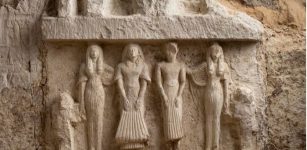 Impressive Ancient Underground Tombs And Chapels Unearthed In Saqqara, Egypt
Archaeology | Apr 16, 2023
Impressive Ancient Underground Tombs And Chapels Unearthed In Saqqara, Egypt
Archaeology | Apr 16, 2023 -
 First Evidence Of Canoe Burial With Remains Of A Woman Discovered In Argentinian Patagonia
Archaeology | Aug 27, 2022
First Evidence Of Canoe Burial With Remains Of A Woman Discovered In Argentinian Patagonia
Archaeology | Aug 27, 2022 -
 Ancient Clay Tablets Reveal Mesopotamians Experienced Emotions In Their Bodies Differently Than Modern Humans
Archaeology | Dec 6, 2024
Ancient Clay Tablets Reveal Mesopotamians Experienced Emotions In Their Bodies Differently Than Modern Humans
Archaeology | Dec 6, 2024 -
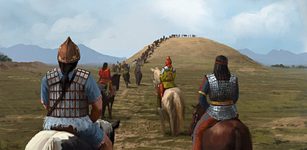 ‘Cradle Of The Scythians’ Studied By Russian-Polish Archaeologists
Archaeology | Dec 20, 2015
‘Cradle Of The Scythians’ Studied By Russian-Polish Archaeologists
Archaeology | Dec 20, 2015 -
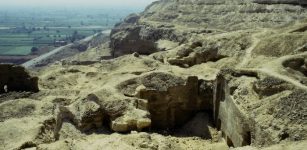 Egyptian Necropolis Of Asyut And Funerary Culture That Dates Back To Old Kingdom
Archaeology | Feb 24, 2020
Egyptian Necropolis Of Asyut And Funerary Culture That Dates Back To Old Kingdom
Archaeology | Feb 24, 2020 -
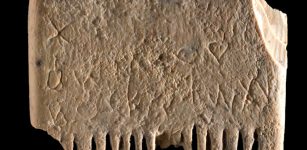 Breakthrough – First Sentence Ever Written In Canaanite Language Discovered – What Does It Say?
Archaeology | Nov 9, 2022
Breakthrough – First Sentence Ever Written In Canaanite Language Discovered – What Does It Say?
Archaeology | Nov 9, 2022 -
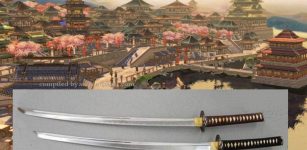 Katana ‘Soul Of The Samurai’ – Most Famous Japanese Sword With Long Tradition
Ancient History Facts | Apr 12, 2018
Katana ‘Soul Of The Samurai’ – Most Famous Japanese Sword With Long Tradition
Ancient History Facts | Apr 12, 2018 -
 Qanat Firaun -‘Canal Of The Pharaohs’ Is The Ancient World’s Longest Underground Tunnel
Featured Stories | Mar 10, 2022
Qanat Firaun -‘Canal Of The Pharaohs’ Is The Ancient World’s Longest Underground Tunnel
Featured Stories | Mar 10, 2022 -
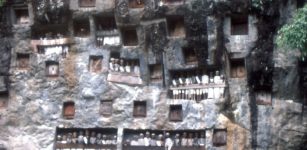 Ancient Burials Shed New Light On Earliest Humans In Indonesia
Archaeology | Aug 25, 2022
Ancient Burials Shed New Light On Earliest Humans In Indonesia
Archaeology | Aug 25, 2022 -
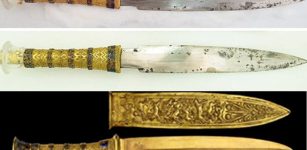 King Tut’s Cosmic Dagger Was Not Made In Egypt – New Study Reveals
Archaeology | Feb 24, 2022
King Tut’s Cosmic Dagger Was Not Made In Egypt – New Study Reveals
Archaeology | Feb 24, 2022 -
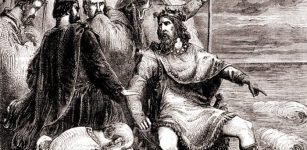 On This Day In History: Canute – Cnut The Great – Danish King Of England Died – On Nov 12, 1035
Featured Stories | Nov 12, 2016
On This Day In History: Canute – Cnut The Great – Danish King Of England Died – On Nov 12, 1035
Featured Stories | Nov 12, 2016 -
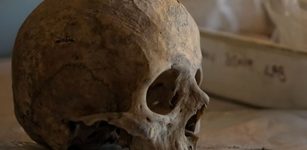 DNA Of 10,000-Year-Old Skeletal Remains And Kinship Of Earliest World Settlers
Archaeology | Apr 21, 2021
DNA Of 10,000-Year-Old Skeletal Remains And Kinship Of Earliest World Settlers
Archaeology | Apr 21, 2021 -
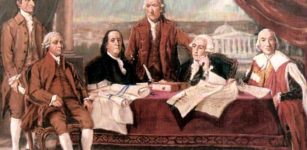 On This Day In History: Treaty Of Paris Was Ratified – On January 14, 1784
News | Jan 14, 2017
On This Day In History: Treaty Of Paris Was Ratified – On January 14, 1784
News | Jan 14, 2017 -
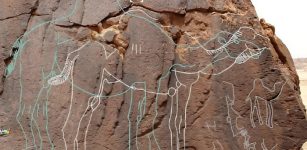 Remarkable Neolithic Life-Sized Camel Engravings Discovered In The Nefud Desert
Archaeology | Oct 5, 2023
Remarkable Neolithic Life-Sized Camel Engravings Discovered In The Nefud Desert
Archaeology | Oct 5, 2023 -
 House Of Dragons – Stories And British History That Inspired The Beasts Of Westeros
Featured Stories | Sep 18, 2022
House Of Dragons – Stories And British History That Inspired The Beasts Of Westeros
Featured Stories | Sep 18, 2022 -
 Mysterious People Who Appeared Out Of Nowhere
Featured Stories | Sep 1, 2018
Mysterious People Who Appeared Out Of Nowhere
Featured Stories | Sep 1, 2018 -
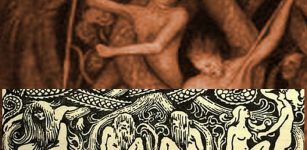 Nastrond (Náströnd): Grisly Hall Of Corpses – Norse Vision Of Most Terrible Place In Niflheim, Kingdom Of The Dead
Featured Stories | Sep 13, 2019
Nastrond (Náströnd): Grisly Hall Of Corpses – Norse Vision Of Most Terrible Place In Niflheim, Kingdom Of The Dead
Featured Stories | Sep 13, 2019 -
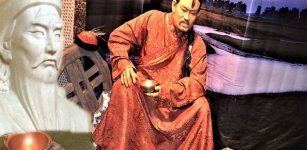 Jamukha: Mongolian Leader, Military And Childhood Friend Of Genghis Khan But Not Forever
Featured Stories | May 8, 2019
Jamukha: Mongolian Leader, Military And Childhood Friend Of Genghis Khan But Not Forever
Featured Stories | May 8, 2019 -
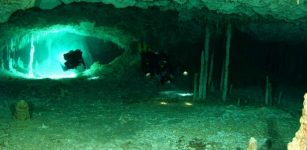 New Evidence Reveals That Humans Settled In Americas At Least 13,000 Years Ago
Archaeology | Sep 4, 2017
New Evidence Reveals That Humans Settled In Americas At Least 13,000 Years Ago
Archaeology | Sep 4, 2017 -
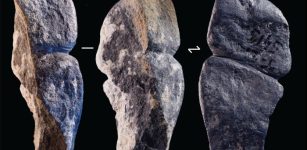 Oldest Carving Of A Penis Discovered On Ancient Mongolian Pendant
Archaeology | Jun 20, 2023
Oldest Carving Of A Penis Discovered On Ancient Mongolian Pendant
Archaeology | Jun 20, 2023



